Overview
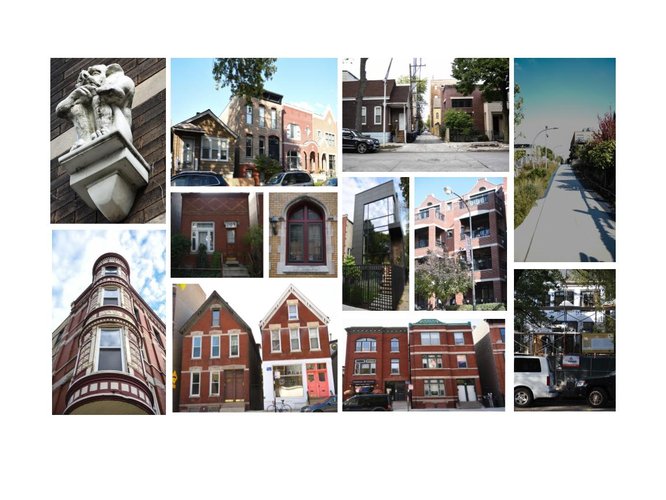
Bucktown encompasses just over one square mile (653.4 acres) on
Chicago’s northside and lies adjacent to the west of Lincoln Park. Bucktown,
surrounded by many dynamic communities, is home to some 24,000 residents many
of whom are young professionals and young families. Property values continue to
rise; today’s average value of a detached house is $628k. Most new homes cost
well over a million dollars; a 6 bedroom, 6 bath, 5100 Sq. Ft. single family
home on Honore Street is currently listed at $2.4 million. There are many
older homes (the majority of residences were built before 1939) that have been
rehabilitated for today’s lifestyle. Beginning in the early 1990s Bucktown
experienced a significant transformation with the renovation of older properties
to new construction ranging from traditional, stone estates to uber modern
architecture. The average age of a Bucktown resident is 32. Nearly half of
those residents hold an undergraduate degree and approximately 20 percent have
Master’s degrees. A remarkable 76 percent of married couples both work. Not
surprisingly, more than 50 percent of children enrolled in grades K - 12 attend
a private school. Bucktown could easily be compared to Martha’s Vineyard, an
island off the coast of MA. It has an incredibly strong culture among its
year-round residents and ranks among the most popular U.S. destinations to
visit for its architecture, shops and food. Bucktown, like Martha’s Vineyard,
has a unique lifestyle brand.
(Statistics taken from: http://www.city-data.com/neighborhood/Bucktown-Chicago-IL.html)
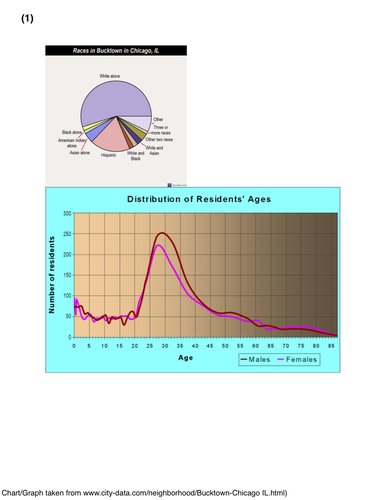

Within Bucktown’s one square mile is a thriving community of engaged residents who proudly call the cohesive neighborhood their home. The area, part of the 32nd Ward represented by Alderman Scott Waguespack, today is predominately composed of young professionals and young families. Sprinkled throughout Bucktown is a small population of longtime residents who have owned their properties for 40 to 50 years. The juxtaposition between young and old, new and vintage has, according to Elizabeth Gomez, advisor to Alderman Waguespack, caused tension over some larger residential building permits.
The overwhelming majority of residents in Bucktown are college educated, employed and help sustain the local economy of award winning restaurants and variety of sophisticated retailers including high end home and clothing stores. Last year, Crain’s Chicago Business reported on the emergence of Bucktown’s ‘Indie Row,’ saying it has become one of the hottest shopping destinations for home décor. Bucktown businesses greatly benefit from being blocks away from the Kennedy Expressway providing easy access from downtown Chicago and the suburbs. The restaurant and bar scene is vibrant and attracts people from all over the metro Chicago area. Among its best-known food spots are Le Bouchon, The Bristol, Coast Sushi Bar, Iraazu and Club Lucky. Practically every cuisine can be found in Bucktown.
The well-educated nature of the Bucktown population puts education at the center of its community culture. Parents can choose from among several Public, Montessori and Catholic school options for pre-K to 8th grade. Bucktown lies adjacent to Wicker Park and while the communities are distinct and unto themselves in many respects, there is much crossover in commerce and public resources. The library dedicated to Bucktown is the Bucktown/Wicker Park Branch. The local Chamber or Commerce is the Wicker Park/Bucktown Chamber. Well- known neighborhood events, arts events and festivals are promoted across Bucktown and Wicker Park. Bucktown enjoys its own hip identity and has become as popular a place to live and enjoy as its nearby sister community, Lincoln Park.
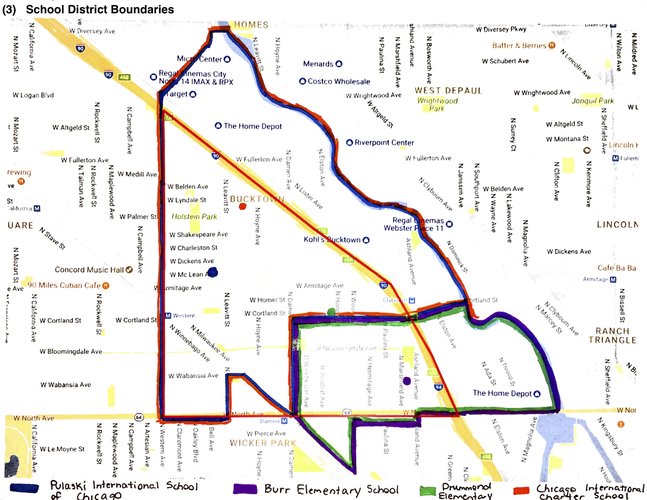
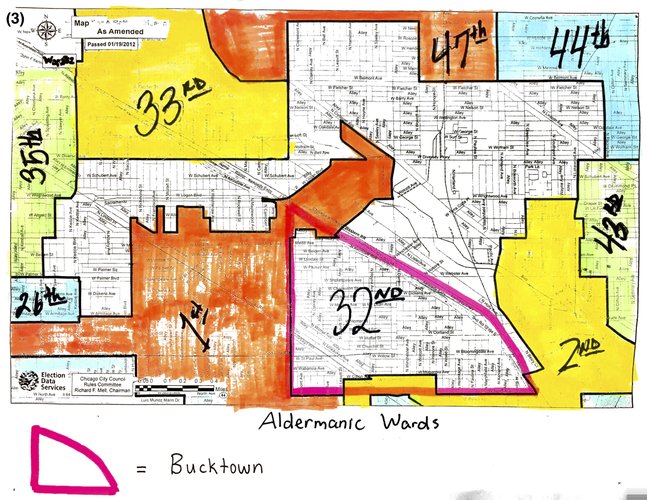
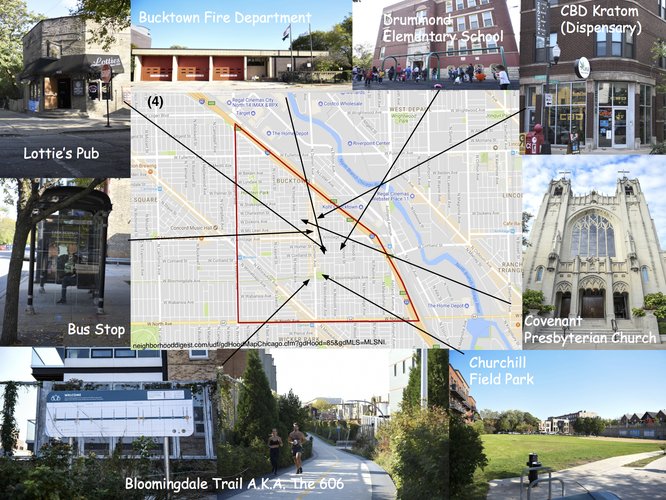
The origin of Bucktown dates back almost 200 years before Chicago was even incorporated as a city. In the 1830s, Polish immigrants inhabited the fields and marshlands adjacent to the Chicago River. It provided an ideal place for newcomers to reside and work. Polish settlers utilized the vast land and body of water to raise large numbers of goats. To locals, this area would be known as “kozie prery” or “goat prairie.” The male term for a goat is “buck,” so it was only fitting for the settlement to be named Bucktown.
By the 1840s, a number of German immigrants from Schleswig-Holstein arrived in Chicago. However, they came with limited supplies to get them through the cruel winter. Fortunately and ironically, a noble man named Marcus Nobles who worked with Archibald Clybourn established the first meatpacking house and generously provided a sufficient amount of flour to start their new lives. By 1854, the town of Holstein was founded but soon annexed to the City of Chicago. Another large migration of Polish immigrants--mainly Jewish immigrants facing persecution in Europe—settled in the area between the 1870s and 1930s. Russian and Latin migration began in the 1960s along Damen and Milwaukee Avenues through the 1980s.
A very strong Polish identity can be seen in Bucktown in the churches built during the early days of the neighborhood. St. Stanislaus Kostka was the first Polish Catholic parish built around 1867. Immigrants organized their lives around these churches, which served as an important centerpiece of the community. By the early 20th century the population between the Chicago River and Milwaukee to Fullerton was nearly two-thirds Polish. Because of the high density of Poles, Chicagoans referred to the area as Chicago’s “Polish Corridor.” St. Stanislaus Kostka pioneered the development of many parishes, including Bucktown and Chicago’s most renowned Polish cathedrals St. Hedwig’s, built in 1888 and St. Mary of the Angels in 1897.
Roads were dirt in early Bucktown but by the mid 19th century thoroughfares including Milwaukee Avenue were lined with planks of wood. Roads slowly improved with material like asphalt, which surfaced North Avenue in the 1870s. Streets, named in honor of Poland, became Kosciusko, Sobieski, Pulaski and Leipzig. When Germans and Poles shared the neighborhood tensions arose over street naming. By order of the City Council pressed by a German group with political clout, several Polish sounding streets were renamed Frankfort, Berlin and Holstein. The World Wars and resulting anti-German attitudes prompted another street name change and Anglo-Saxon sounding streets McLean, Shakespeare, Charleston and Palmer among others were introduced. By late 19th century, Chicago declared that all city streets must sit the same number of feet above sea level. Consequently, Bucktown’s streets were raised. Many houses built in low lying areas had to be jacked up so new basements could be installed.
The Chicago River was heavily utilized for transportation by early settlers to develop industry in the area. Beginning in the 1940s clay was rummaged from the river for brick making. After the Great Chicago Fire in 1871, a lot of homes were reconstructed of brick and stone. The Great Fire also drove continual growth for the community of immigrant laborers. The three-way intersection of Armitage, Ashland and Elston became the area’s industrial hub. Many residents were employed at the Chicago Carriage and Wagon Factory located near Milwaukee and North Avenues. Construction of the North Western and Chicago Railroad began in the 1850s and by the 1890s the elevated railway, Chicago’s Blue Line, would be built.
Remnants of history and long-standing tradition can still be stumbled upon in Bucktown. Archaic street numbers appearing in stained glass, toilet rooms beneath vaulted sidewalks, original cobblestone lining alleyways, streetcar tracks flowing through the streets, and, needless to say, the stunning century-old buildings.
"The History of Bucktown." Bucktown Community Organization. N.p., n.d. Web.
Otet, Ama. "Living in Bucktown - One of Chicago's Trendiest Neigborhoods." RENTCafe Rental Blog. N.p., 29 Feb. 2016. Web.
Wilusz, Luke. "Drawing the Lines: Bucktown, Wicker Park Borders." Bucktown-Wicker Park, IL Patch. Patch, 08 Mar. 2013. Web.



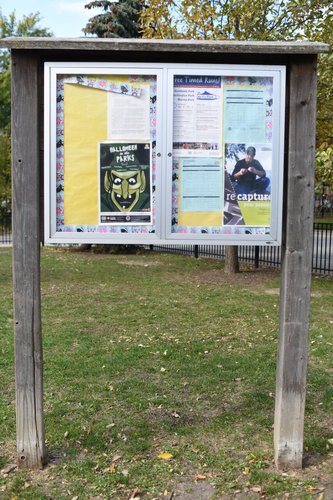
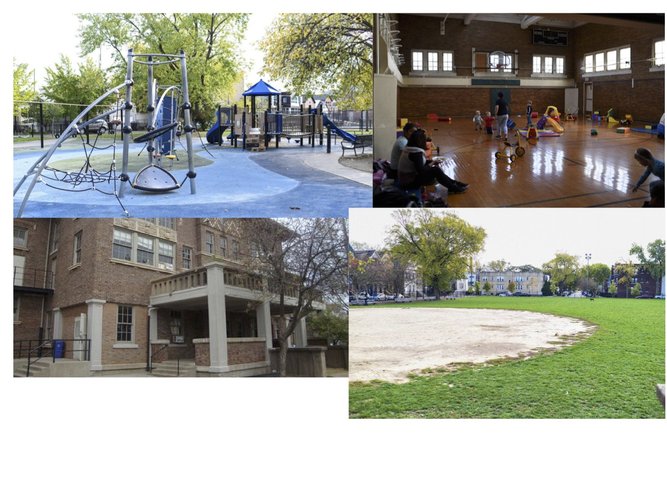

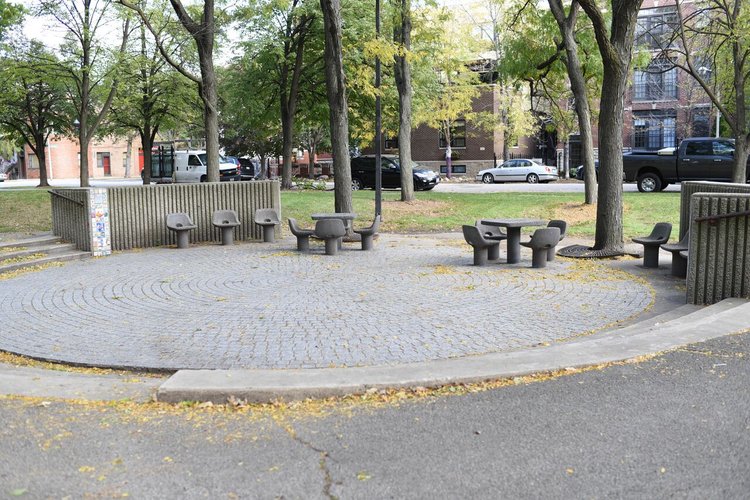
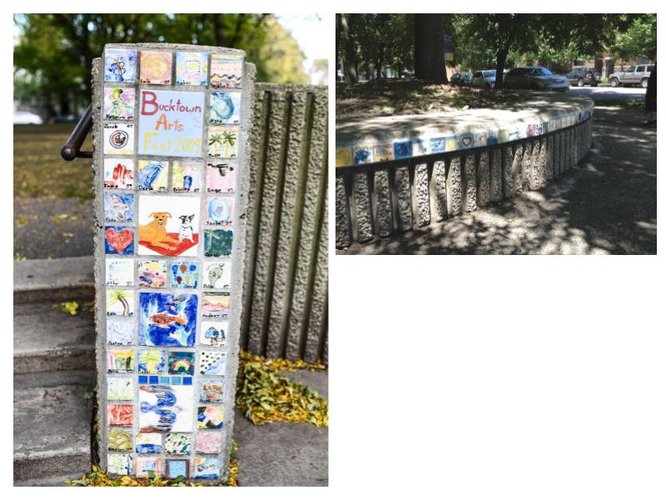


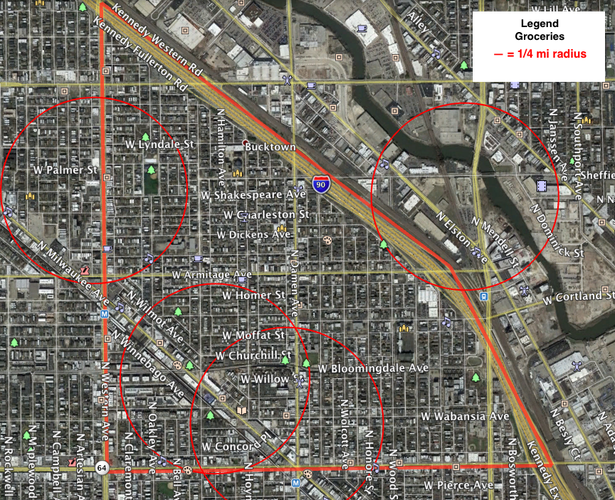
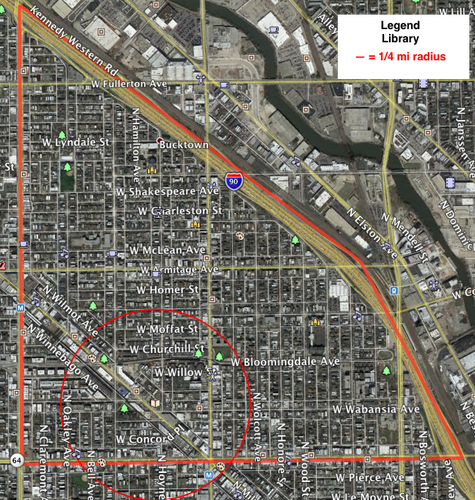
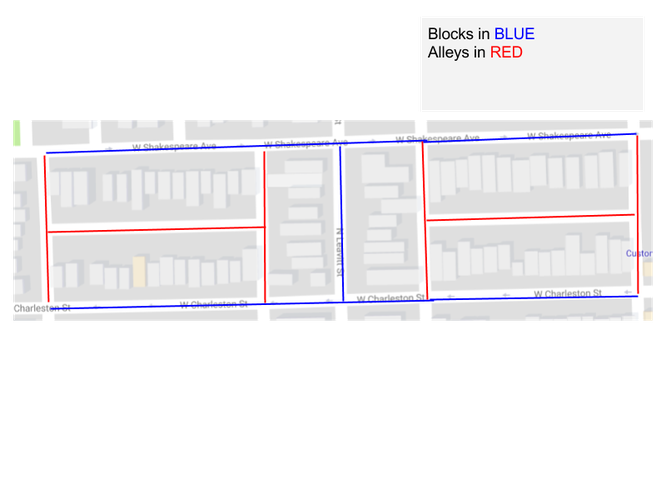
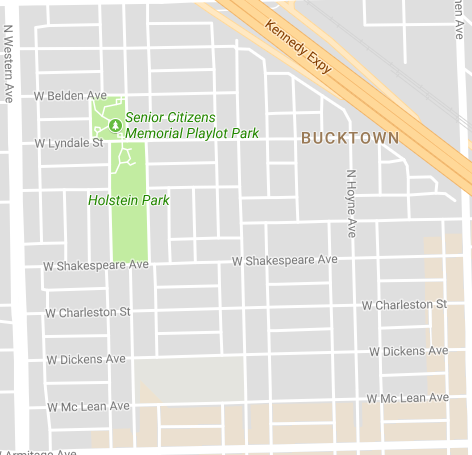
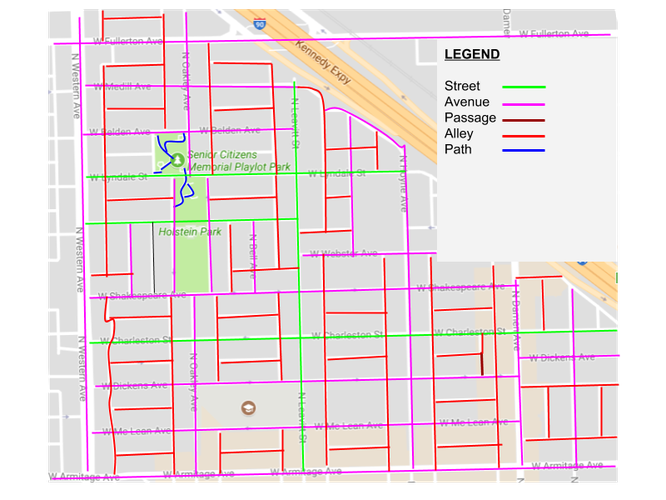


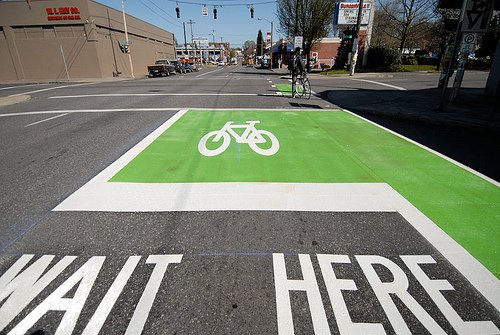

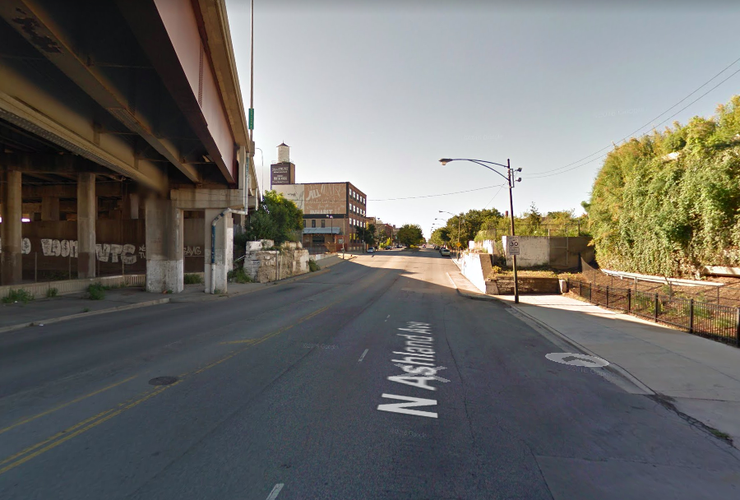
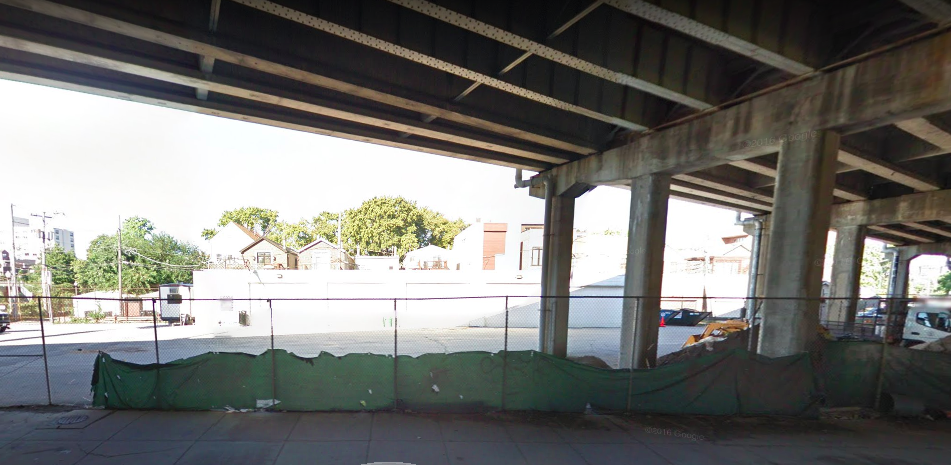
Social Mix
The Bucktown neighborhood of Chicago is fairly homogenous compared to the city of Chicago in terms of race, age, and education completion. With regards to race, Bucktown is predominantly white with a moderate population of Hispanics scoring a 1.8 out of 6. This is substantially lower than Chicago’s diversity index for race of 3.5. Though, with that index, I wouldn’t consider Chicago that diverse considering it is out of 6 possible points. Understandably, Chicago is much more diverse in age with a 6.0 out of 7 compared to Bucktown’s 4.5. Per capita Chicago is much larger than Bucktown, obviously. Bucktown comprises a large amount of people aged 25 to 34 exceeding all other age groups. Surprisingly, Bucktown’s educational attainment for population 25 years and older is lower than expected scoring a 2.9 out of 5. Compared to the whole of Chicago, it is exceptionally low in reflection of the city’s 4.8 out of 5.
In conclusion, Bucktown is most diverse in age compared to the other two variables explored. Compared to Bucktown, Chicago is much more diverse with regards to the Simpson Diversity Index calculated for race, age, and education.